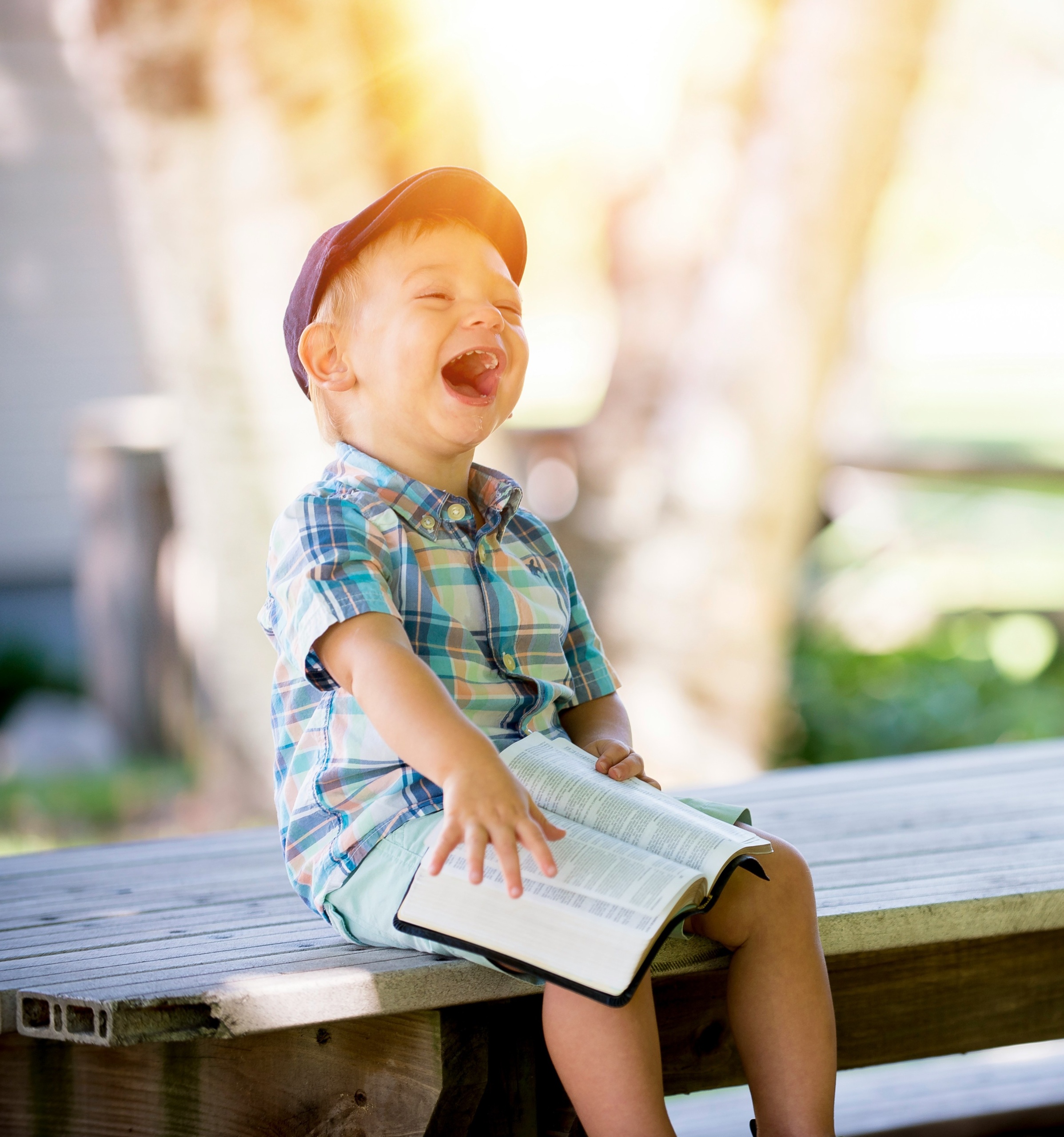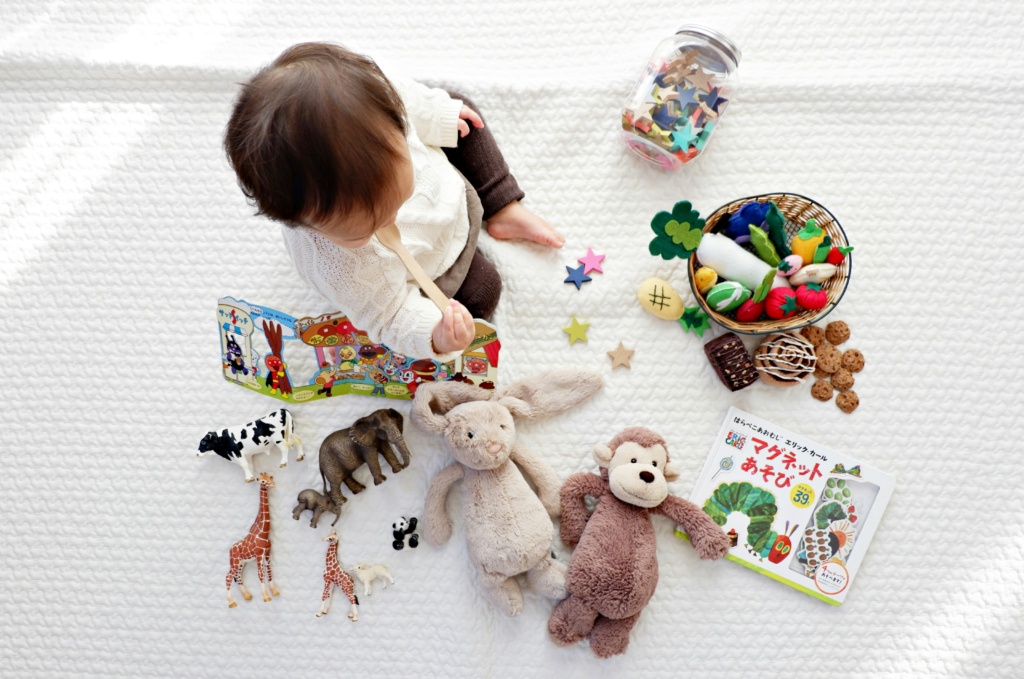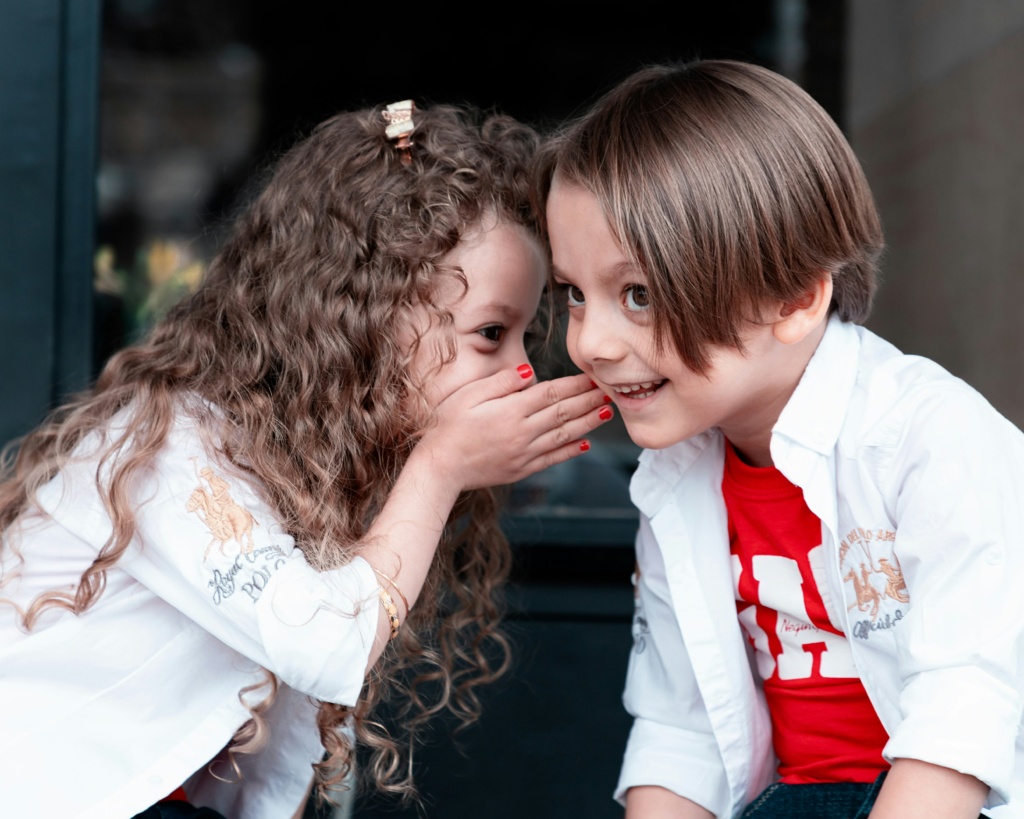Speech and Language Milestones

Babies begin communicating the moment they are born, crying to let us know they might be cold, tired, hungry, wet, or need soothing. At first, babies communicate to get their needs met, and slowly, as they grow, they start communicating to request information, protest, comment, give direction, ask questions, give opinions, and greet others.
As a licensed speech pathologist, I am frequently asked about speech milestones and how closely to these milestones a child should be developing. While milestones are an excellent tool to track development, it is essential to remember that every child is unique. Many factors can influence the relevance of benchmarks. I ask Mamas to use speech milestones as more of a guide and tap into their innate intelligence and intuition if they are in a situation where they believe their child may need additional therapies and support. Milestone charts can be confusing, so let’s break it down before we get into the nitty-gritty.
Speech is the act of talking—making sounds to form words. It includes articulation, or how we make speech sounds with the mouth, lips, and tongue, and voice, or how we use our vocal folds and breath to make sounds. It also includes fluency or the rhythm of speech.
Language, on the other hand, refers to the words we use and HOW we use them. Language involves speaking words and using gestures and facial expressions to communicate and understand others.
Remarkably, infants begin learning about speech and language in the womb. During this phase, they can hear and respond to familiar voices. Once born, they grow and develop their speech and language competency in stages that can be divided into milestones. These speech milestones help parents to understand whether their child is on track and developing as expected. Each milestone involves the development of a particular set of skills, such as babbling, saying “yes,” “no,” “mama,” or “dada,” and stringing words together. Generally speaking, a child needs to master one milestone before graduating to the next one.

Communication Milestones
Birth to 12 Months
Infants are already very responsive to communication within the first year of life. They actively look for the source of a voice and can differentiate between and respond to various tones (e.g., happy versus upset). They prefer looking at human faces and into eyes, following people’s gazes, and smiling back at others. During this development phase, infants will vocalize to seek attention and use hand gestures to make requests. They can make sounds back and forth with others and differentiate their sounds depending on their mood and how they are feeling.
Within the first three months of life, infants coo and make sounds like “ooooo””, “aahh” and “mmm”. During months 4-6, they can pronounce different vowel sounds and sometimes combine them with consonants. Sounds like “uuummm”, “aaaagoo” or “daaaa” can be heard. During months 7-9, babies begin stringing long sounds together such as “mamama”, “upup” or “baba”. Generally, by months 10-12, they can say one or two simple words such as “mama”, “dada”, “hi” or “bye”.
By the end of year 1, babies enjoy playing simple interactive games like blowing kisses or peek-a-boo. They also enjoy dancing and respond to simple phrases like “Go bye-bye.”
13-18 Months
During months 13-18, children become much more intentional with their communication. You may notice that they point to make requests or comments. They shake their heads for “no” and nod for “yes.” They can use simple gestures like clapping, giving high-fives, or making funny faces. At this stage, they begin developing the ability to demonstrate more complex emotions, such as sympathy and empathy. They show joy, fear, and anger and display an increase in autonomy.

19-24 Months
During months 19-24, speech and language skills become more sophisticated. By this stage, children can generally use and understand at least 50 words for toys, food, animals, and body parts. They can combine two or more words, like “more food” or “play outside.” They use words like “you,” “mine,” “I,” and “me” and can start to ask for help. Although the size of vocabulary increases at this stage, words may only sometimes be clear or pronounced correctly. These months are also marked by increased autonomy, behavioral and emotional regulation, and the demonstration of attachment style.
2-3 Years
During years 2-3, speech and language skills become clearer but may not be understandable to people outside the immediate family. By this milestone, children start applying low-level grammatical skills, such as using some plural words or using -ing verbs. They combine words often but may occasionally repeat some words within a phrase. In their words, they can pronounce vowels correctly, including p, b, m, h, w, d, and n. During these years, children begin to understand the reasoning for things and events and continue to grow this understanding by asking why and how questions. They can engage in short dialogue, introduce and change topics, and imaginatively use language.
3-4 Years
Within years 3-4, children begin to speak smoothly without repeating words or phrases. They start to talk in a way that allows people outside the immediate family to understand most of what they are saying. Children this age can correctly pronounce t, k, g, f, y, and -ing words and all syllables in a word. They may pretend to read alone or with others and can begin to write some letters. They may start to tell stories from a book or video while using comparative words like “longer” or “taller.” During this phase, children also begin to express a sense of humor – using language for teasing and jokes.

5-6 Years
By years 5-6, children produce longer, more complex, and grammatically correct sentences. They can tell stories with details of the setting and one main character. Children use “and” when they speak to connect information and ideas. They use location words like “between” and “beside” as well as time-related words like “yesterday” and “tomorrow.” They can follow simple rules and directions. Children can name 10 or more letters and usually write their names during this phase.
Speech and Language Delays
It’s common for parents to have questions about the progress of their child’s speech and language development. Remember that slight temporary delays can occur in children who are developing typically.
True speech delays are often related to developmental, environmental, and health factors, including hearing loss. One major contributor to developmental speech and language delay is the presence of toxic heavy metals in the brain area related to speech and language.
“Recent research reveals that exposures to neurotoxicants such as lead, mercury, and pesticides can have a particularly detrimental impact on brain function and, in turn, lead to the expression of learning and developmental disabilities, including speech, language, and hearing disorders (Miller & Snow, 2004; Schettler, Stein, Reich, Valenti, & Wallinga, 2000). The complex interaction of genetics and the environment during windows of vulnerability may lead to the expression of various disabilities. These environmental contributors to disability are often the least appreciated yet the most preventable.” https://leader.pubs.asha.org/doi/10.1044/leader.FTR2.11132006.6
If you are curious about how we accumulate toxic heavy metals and how we can remove them, check out this recent blog post.
If you want to learn more about how these factors impact speech and language development, join our Empowered Wellness Circle Monthly Membership!
Act Today
Getting help early is better than waiting. You may be able to get free or low-cost services for your child. Talk to your doctor or contact your local school. They can tell you about early intervention programs and other services. To learn more about communication and feeding skill development, visit https://www.asha.org/public/developmental-milestones/.
Finding Help
Speech-language pathologists, or SLPs, help children with language, speech sound, stuttering, or voice problems. Audiologists help people who have trouble hearing.
Look for an SLP or audiologist who has earned the Certificate of Clinical Competence, or CCC, from ASHA. ASHA-certified SLPs have “CCC-SLP” after their names. ASHA-certified audiologists have “CCC-A” after their names.
To find a speech-language pathologist or audiologist near you, visit https://www.asha.org/profind/.
For more in-depth, 1-on-1 support:
